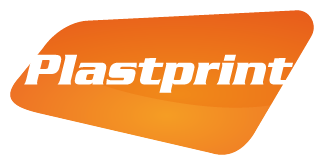The Difference Between NLP, NLU, and NLG: Diving Deep into Language Technologies by Emami
They use AI and unique research methods to gather insights and translate these into actionable strategies for brands. Their work includes strategic planning, workshops, and resources for educators and policymakers. By fostering student-centered learning environments, they aim to create equitable educational difference between nlp and nlu opportunities, preparing students for an evolving world. Their platform is designed to be user-friendly, ensuring a seamless experience for employers and employees alike. The platform enables retailers to increase ad revenues, deliver personalized shopping experiences, and automate ad campaign management.
Since the 1950s, the computer and language have been working together from obtaining simple input to complex texts. It was Alan Turing who performed the Turing test to know if machines are intelligent enough or not. However, syntactic analysis is more related to the core of NLU examples, where the literal meaning behind a sentence is assessed by looking into its syntax and how words come together. With NLU models, however, there are other focuses besides the words themselves. These algorithms aim to fish out the user’s real intent or what they were trying to convey with a set of words.
The “suggested text” feature used in some email programs is an example of NLG, but the most well-known example today is ChatGPT, the generative AI model based on OpenAI’s GPT models, a type of large language model (LLM). Such applications can produce intelligent-sounding, grammatically correct content and write code in response to a user prompt. In recent years, with so many advancements in research and technology, companies and industries worldwide have opted for the support of Artificial Intelligence (AI) to speed up and grow their business.
Technology updates and resources
Clarteza’s approach helps brands connect with consumers more effectively, ensuring that their products and services are aligned with consumer expectations and market trends. Databricks provides a data intelligence platform, integrating ETL, data ingestion, business intelligence, AI, and governance tools. It helps organizations in efficiently managing and analyzing large volumes of data, aiding in better decision-making. Their services include building robust data pipelines, streamlining data processing, and leveraging AI for actionable insights. Their solutions are beneficial for businesses seeking efficient event orchestration, as they enable data integration, flexibility, and customization. This approach results in enhanced attendee engagement, operational efficiency, and strategic marketing alignment.
What is Natural Language Understanding & How Does it Work? – Simplilearn
What is Natural Language Understanding & How Does it Work?.
Posted: Fri, 11 Aug 2023 07:00:00 GMT [source]
That’s why simple tasks such as sentence structure, syntactic analysis, and order of words are easy. It’s a branch of artificial intelligence where the primary focus is on the interaction between computers and humans with the help of natural language. Grammar complexity and verb irregularity are just a few of the challenges that learners encounter. Now, consider that this task is even more difficult for machines, which cannot understand human language in its natural form. Together with NLG, they will be able to easily help in dealing and interacting with human customers and carry out various other natural language-related operations in companies and businesses.
Do You Need Both NLP And NLU?
Natural Language Processing, or NLP, involves the processing of human language by a computer program to determine what its meaning is. Furthermore, NLU and NLG are parts of NLP that are becoming increasingly important. These technologies use machine learning to determine the meaning of the text, which can be used in many ways. Artificial intelligence is becoming an increasingly important part of our lives. However, when it comes to understanding human language, technology still isn’t at the point where it can give us all the answers. Using tokenization, NLP processes can replace sensitive information with other values to protect the end user.
The noun it describes, version, denotes multiple iterations of a report, enabling us to determine that we are referring to the most up-to-date status of a file. Natural languages are different from formal or constructed languages, which have a different origin and development path. For example, programming languages including C, Java, Python, and many more were created for a specific reason.
NLP vs NLU comparisons help businesses, customers, and professionals understand the language processing and machine learning algorithms often applied in AI models. It starts with NLP (Natural Language Processing) at its core, which is responsible for all the actions connected to a computer and its language processing system. This involves receiving human input, processing it, and putting out a response. It uses neural networks and advanced algorithms to learn from large amounts of data, allowing systems to comprehend and interpret language more effectively. NLU often involves incorporating external knowledge sources, such as ontologies, knowledge graphs, or commonsense databases, to enhance understanding. The technology also utilizes semantic role labeling (SRL) to identify the roles and relationships of words or phrases in a sentence with respect to a specific predicate.
With applications across multiple businesses and industries, they are a hot AI topic to explore for beginners and skilled professionals. Sometimes people know what they are looking for but do not know the exact name of the good. In such cases, salespeople in the physical stores used to solve our problem and recommended us a suitable product.
Natural Language Understanding(NLU) is an area of artificial intelligence to process input data provided by the user in natural language say text data or speech data. It is a way that enables interaction between a computer and a human in a way like humans do using natural languages like English, French, Hindi etc. Natural Language Understanding provides machines with the capabilities to understand and interpret human language in a way that goes beyond surface-level processing. It is designed to extract meaning, intent, and context from text or speech, allowing machines to comprehend contextual and emotional touch and intelligently respond to human communication. Natural Language Processing focuses on the interaction between computers and human language. It involves the development of algorithms and techniques to enable computers to comprehend, analyze, and generate textual or speech input in a meaningful and useful way.
Basically, the library gives a computer or system a set of rules and definitions for natural language as a foundation. Speech recognition is an integral component of NLP, which incorporates AI and machine learning. Here, NLP algorithms are used to understand natural speech in order to carry out commands.
You’ve done your content marketing research and determined that daily reports on the stock market’s performance could increase traffic to your site. The Marketing Artificial Intelligence Institute underlines how important all of this tech is to the future of content marketing. One of the toughest challenges for marketers, one that we address in several posts, is the ability to create content at scale. It takes your question and breaks it down into understandable pieces – “stock market” and “today” being keywords on which it focuses. You and your editorial team can then concentrate on other, more complex content. Your development team can customize that base to meet the needs of your product.
What is natural language understanding?
If the evaluator is not able to reliably tell the difference between the response generated by the machine and the other human, then the machine passes the test and is considered to be exhibiting “intelligent” behavior. Going back to our weather enquiry example, it is NLU which enables the machine to understand that those three different questions have the same underlying weather forecast query. After all, different sentences can mean the same thing, and, vice versa, the same words can mean different things depending on how they are used.
For machines, human language, also referred to as natural language, is how humans communicate—most often in the form of text. It comprises the majority of enterprise data and includes everything from text contained in email, to PDFs and other document types, chatbot dialog, social media, etc. NLP refers to the overarching field of study and application that enables machines to understand, interpret, and produce human languages. It’s the technology behind voice-operated systems, chatbots, and other applications that involve human-computer interaction using natural language. The terms NLP, NLU, and NLG are commonly used in the field of artificial intelligence, particularly when referring to the interaction between machines and human languages. While they may sometimes be used interchangeably by those unfamiliar with the field, each term denotes a distinct aspect of language processing.
In contrast, natural language understanding tries to understand the user’s intent and helps match the correct answer based on their needs. NLU goes beyond the basic processing of language and is meant to comprehend and extract meaning from text or speech. As a result, NLU deals with more advanced tasks like semantic analysis, coreference resolution, and intent recognition. As a result, NLU deals with more advanced tasks like semantic analysis, coreference resolution, and intent recognition.
However, when it comes to advanced and complex tasks of understanding deeper semantic layers of speech implementing NLP is not a realistic approach. Meanwhile, with the help of surface-level inspection, these tasks allow machines to understand and improve the basic framework for processing and analysis. It has a broader impact and allows machines to comprehend input, thus understanding emotional and contextual touch. While NLP, NLU, and NLG all play a role in the wider goal of enabling machines to interact seamlessly with human language, each has its distinct features and applications.
Statistical approaches are data-driven and can handle more complex patterns. NLP primarily works on the syntactic and structural aspects of language to understand the grammatical structure of sentences and texts. With the surface-level inspection in focus, these tasks enable the machine to discern the basic framework and elements of language for further processing and structural analysis.
- Formerly the managing editor of BMC Blogs, you can reach her on LinkedIn or at chrissykidd.com.
- The platform benefits businesses of all sizes by enhancing customer relationships, improving sales productivity, and enabling effective marketing strategies.
- As a result, NLU deals with more advanced tasks like semantic analysis, coreference resolution, and intent recognition.
- He graduated from Bogazici University as a computer engineer and holds an MBA from Columbia Business School.
- In such cases, salespeople in the physical stores used to solve our problem and recommended us a suitable product.
The rest 80% is unstructured data, which can’t be used to make predictions or develop algorithms. The major difference between the NLU and NLP is that NLP focuses on building algorithms to recognize and understand natural language, while NLU focuses on the meaning of a sentence. With NLP, the main focus is on the input text’s structure, presentation, and syntax. It will extract data from the text by focusing on the literal meaning of the words and their grammar. The problem is that human intent is often not presented in words, and if we only use NLP algorithms, there is a high risk of inaccurate answers. NLP has several different functions to judge the text, including lemmatization and tokenization.
While NLU deals with understanding human language, NLG focuses on generating human-like language. It’s used to produce coherent and contextually relevant sentences or paragraphs based on a specific data input. Neural networks figure prominently in NLP systems and are used in text classification, question answering, sentiment analysis, and other areas.
Natural language understanding is a subset of machine learning that helps machines learn how to understand and interpret the language being used around them. This type of training can be extremely beneficial for individuals looking to improve their communication skills, as it allows machines to process and comprehend human speech in ways that humans can. As the basis for understanding emotions, intent, and even sarcasm, NLU is used in more advanced text editing applications.
Correlation Between NLP and NLU
In order to be able to work and interact with us properly, machines need to learn through a natural language processing (NLP) system. Natural Language Generation, or NLG, takes the data collated from human interaction and creates a response that a human can understand. Natural Language Generation is, by its nature, highly complex and requires a multi-layer approach to process data into a reply that a human will understand.
People can say identical things in numerous ways, and they may make mistakes when writing or speaking. They may use the wrong words, write fragmented sentences, and misspell or mispronounce words. NLP can analyze text and speech, performing a wide range of tasks that focus primarily on language structure. However, it will not tell you what was meant or intended by specific language. NLU allows computer applications to infer intent from language even when the written or spoken language is flawed. You can foun additiona information about ai customer service and artificial intelligence and NLP. On our quest to make more robust autonomous machines, it is imperative that we are able to not only process the input in the form of natural language, but also understand the meaning and context—that’s the value of NLU.
In this case, NLU can help the machine understand the contents of these posts, create customer service tickets, and route these tickets to the relevant departments. This intelligent robotic assistant can also learn from past customer conversations and use this information to improve future responses. Natural Language Processing is at the core of all conversational AI platforms. In conversational AI interactions, a machine must deduce meaning from a line of text by converting it into a data form it can understand. This allows it to select an appropriate response based on keywords it detects within the text. Other Natural Language Processing tasks include text translation, sentiment analysis, and speech recognition.
Together they are shaping the future of human-computer interaction and communication. It’s important to be updated regarding these changes and innovations in the world so you can use these natural language capabilities to their fullest potential for your business success. Just by the name, you can tell that the initial goal of Natural Language Processing is processing and manipulation.
You’re also using it to analyze blog posts to match content to known search queries. Natural language processing and natural language understanding language are not just about training a dataset. The computer uses NLP algorithms to detect patterns in a large amount of unstructured data. One of the primary goals of NLU is to teach machines how to interpret and understand language inputted by humans.
But over time, natural language generation systems have evolved with the application of hidden Markov chains, recurrent neural networks, and transformers, enabling more dynamic text generation in real time. This tool is designed with the latest technologies to provide sentiment analysis. It helps you grow your business and make changes according to customer feedback. If you want to create robust autonomous machines, then it’s important that you cannot only process the input but also understand the meaning behind the words. Thus, developing algorithms and techniques through which machines get the ability to process and then manipulate data (textual and spoken language) in a better way. The computational methods used in machine learning result in a lack of transparency into “what” and “how” the machines learn.
Finding one right for you involves knowing a little about their work and what they can do. To help you on the way, here are seven chatbot use cases to improve customer experience. 86% of consumers say good customer service can take them from first-time buyers to brand advocates.
NLU enables human-computer interaction in the sense that as well as being able to convert the human input into a form the computer can understand, the computer is now able to understand the intent of the query. Once the intent is understood, NLU allows the computer to formulate a coherent response to the human input. That’s where NLP & NLU techniques work together to ensure that the huge pile of unstructured data is made accessible to AI. Both NLP& NLU have evolved from various disciplines like artificial intelligence, linguistics, and data science for easy understanding of the text. NLP is the more traditional processing system, whereas NLU is much more advanced, even as a subset of the former. Since it would be challenging to analyze text using just NLP properly, the solution is coupled with NLU to provide sentimental analysis, which offers more precise insight into the actual meaning of the conversation.

For instance, inflated statements and an excessive amount of punctuation may indicate a fraudulent review. At Kommunicate, we envision a world-beating customer support solution to empower the new era of customer support. We would love to have you on board to have a first-hand experience of Kommunicate. The verb that precedes it, swimming, provides additional context to the reader, allowing us to conclude that we are referring to the flow of water in the ocean.
NLP-driven machines can automatically extract data from questionnaire forms, and risk can be calculated seamlessly. NLU skills are necessary, though, if users’ sentiments vary significantly or if AI models are exposed to explaining the same concept in a variety of ways. However, NLU lets computers understand “emotions” and “real meanings” of the sentences. For those interested, here is our benchmarking on the top sentiment analysis tools in the market. Our open source conversational AI platform includes NLU, and you can customize your pipeline in a modular way to extend the built-in functionality of Rasa’s NLU models.
AI uses the intelligence and capabilities of humans in software and programming to boost efficiency and productivity in business. It’s taking the slangy, figurative way we talk every day and understanding what we truly mean. It is characterized by a typical syntactic structure found in the majority of inputs corresponding to the same objective. Although chatbots and conversational AI are sometimes used interchangeably, they aren’t the same thing. Today we’ll review the difference between chatbots and conversational AI and which option is better for your business. You’ll no doubt have encountered chatbots in your day-to-day interactions with brands, financial institutions, or retail businesses.

















